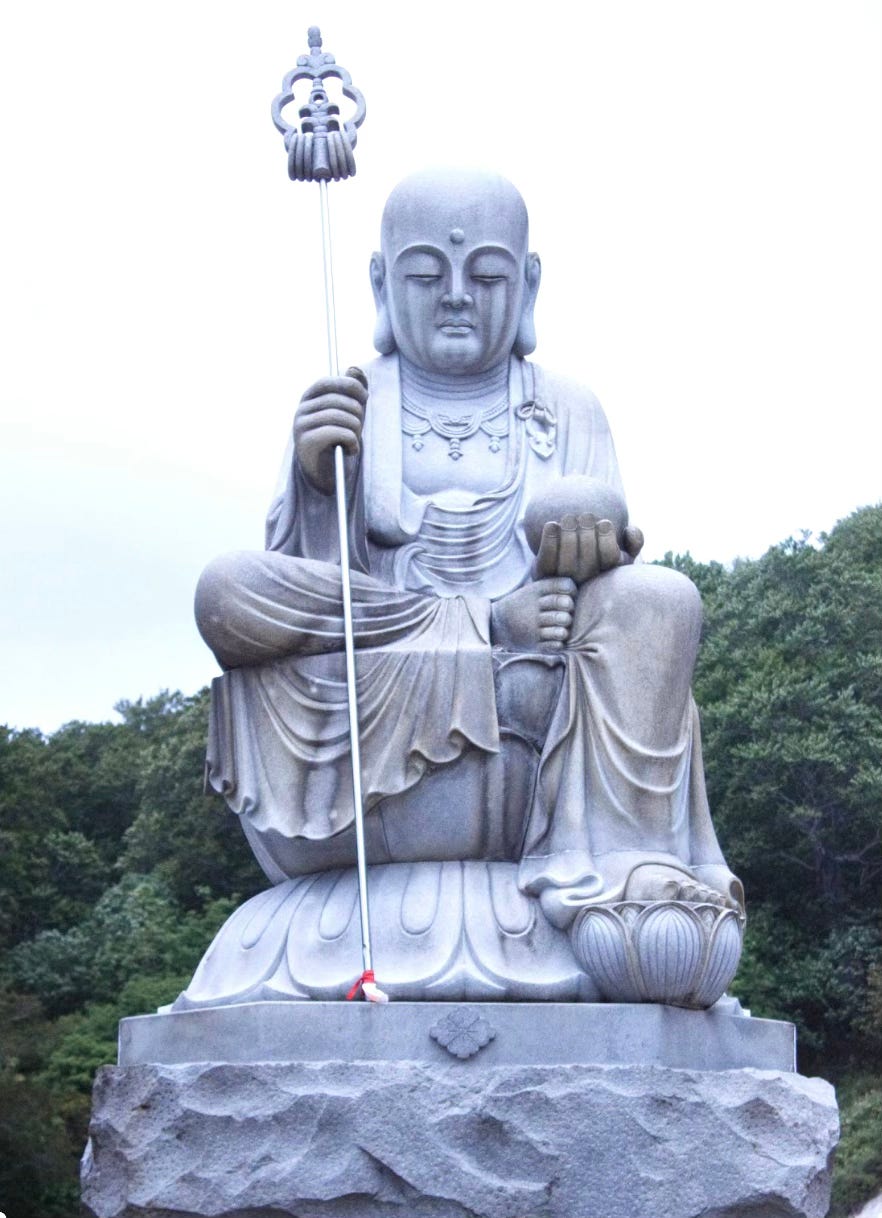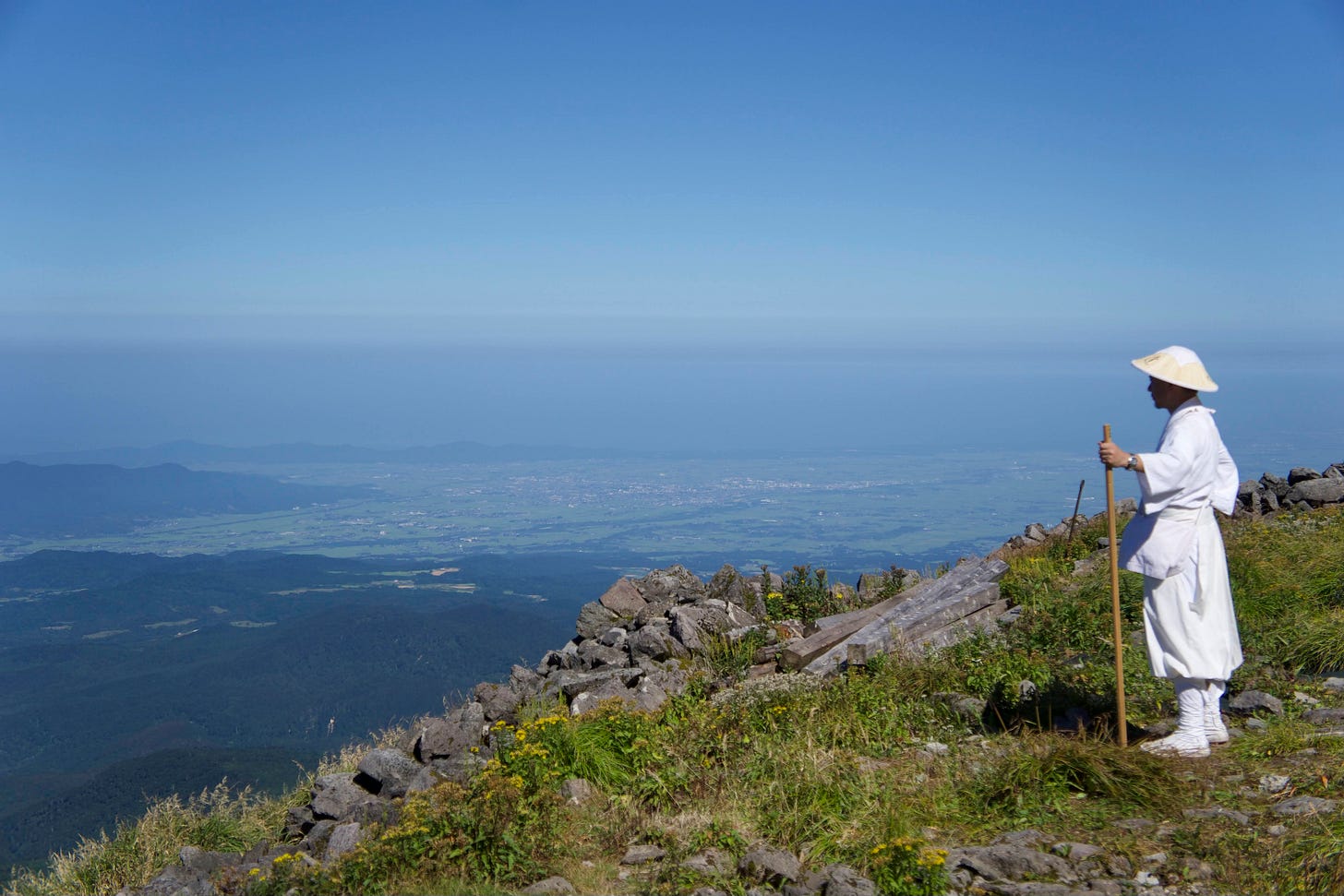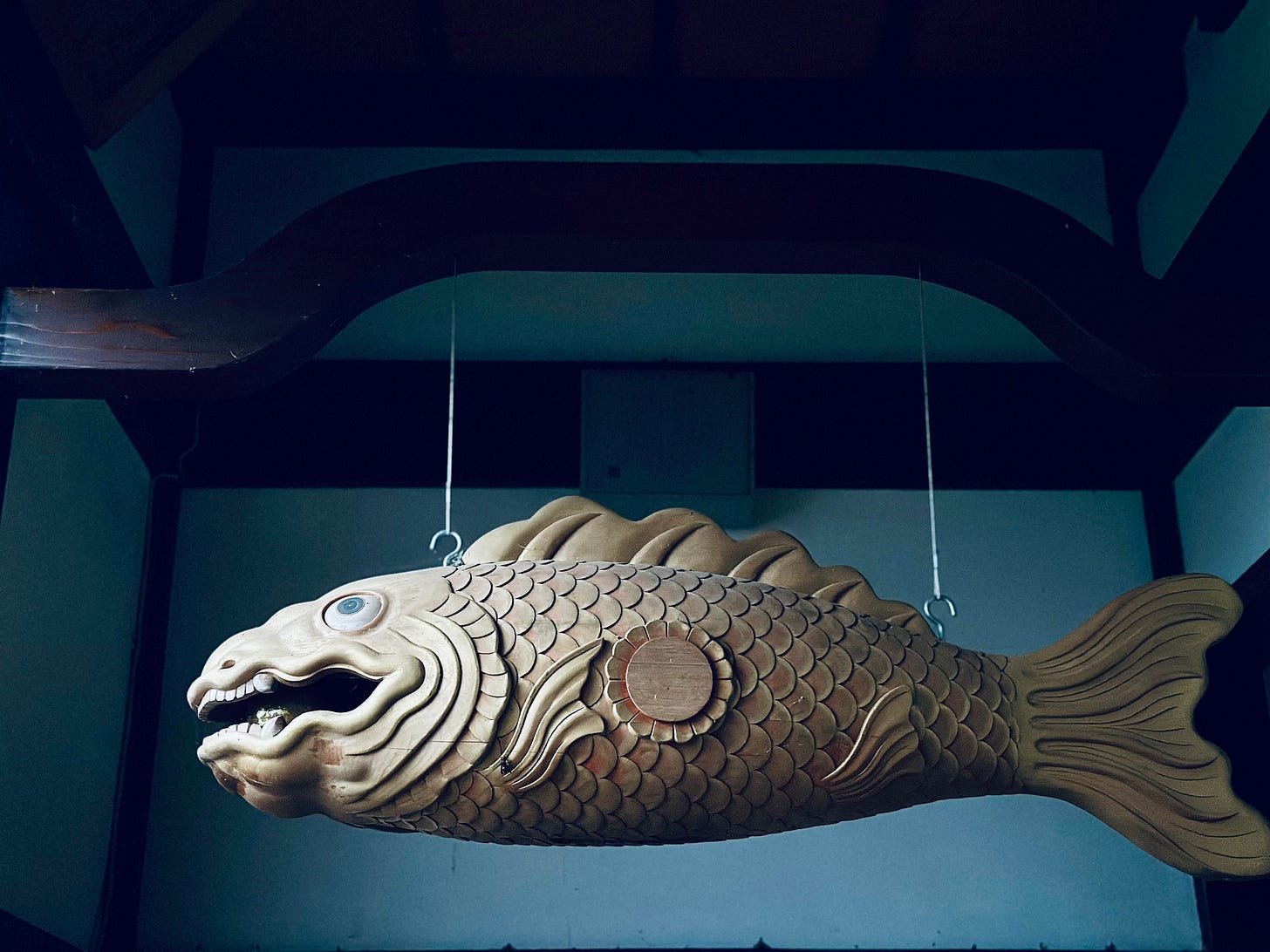The Shakujo Staff: Half Ritualistic, Half Bear Bell, 100% Yamabushi
The sacred staff that protects, purifies, and quite possibly saves your life.
A reader kindly asked me to write about Shakujo staffs, one of the tools of the yamabushi. If you’d love me to explore anything yamabushi or even remotely Japan-related, you can leave a comment on Kiwiyamabushi.com or reach out in the chat section there. Alternatively, just reply to this email and I’ll see what I can do.
So let’s talk about Shakujo.

What is a Shakujo?
Shakujo (written 錫杖) are staffs Buddhist monks and sometimes yamabushi carry. The stick part is usually made of wood, often lacquered black, but what sets a Shakujo apart from the Kongodzue sticks yamabushi are known for is the metallic, pointy top with at least two large hoops and smaller rings around them.
Close up, the top looks like this:

Just like the coins you forgot in your pocket, these rings jingle when you shake a Shakujo or simply walk with one. That jingling may even be where the name "shakujo" comes from in Japanese1.
There is a recording of Master Hoshino using the Shakujo during a ritual on this page (ctrl+f Shakujo and it will come up). While you’re at it, give Mat Eric Hart a follow. Mat did an incredible job capturing the sounds of Haguro-san and the yamabushi a few years back when I met him.
Shaku-shaku.
Can you hear it?
I know them as Shakujo, but in Sanskrit they’re called khakkhara. In English, they’re sometimes called a pewter staff. In Chinese, they can be known as a “tiger pewter staff” because they’re said to ward off tigers.
Yes,
Tigers!!
Because China does indeed have tigers (I had to check!).
But you know what? Here in Japan the verdict is still out on whether bear bells actually work. Frankly, I don’t want to tempt fate, but I will say this: I have come across a bear during yamabushi training before.
At night.
It was about 20m in front of us on the other side of the road. Our master loudly banged his Kongodzue stick on the ground while shouting in a big voice and the bear ran off into the forest. At that time, at least our master, myself, and one other yamabushi had bells on that would have acted the same as bear bells.
So if a Shakujo can ward off tigers, maybe we should have brought one instead?
Who knows?

One more reason to take my conch with me into the mountains!
Why use a Shakujo though?
Besides tigers and bears, Shakujo are said to scare off snakes, spiders, and even warn insects not to get trampled on. Scaring off animals was apparently the original purpose. Ancient Buddhist texts even say it was the only purpose2.
Knowing where monks and yamabushi tend to wander,
that makes a lot of sense.
Either way, just know that these other uses likely came later.
The sound of a Shakujo is said to help clear away worldly desires and open up the path to wisdom. In other words, the sound wakes sentient beings up to Buddhist teachings.
Shakujo also ward off unwanted spirits, purify the area, and notify people during alms collection that a mendicant monk is near.
Like this guy.

Plus, for yamabushi and priests, the Shakujo can be waved rhythmically to keep time during rituals, just like how monks beat a wooden fish drum. Or I guess,
a metronome.

Lastly, the Shakujo has also been used as a weapon by Shaolin monks, or at the very least Shorinji Kenpo practitioners (a Japanese offshoot of Shaolin kung fu), and even warrior yamabushi.
Something like this I guess:
Its metal tip could be used to strike or deflect blows, while the rings could distract or intimidate enemies with their sound. In some martial traditions, especially in China, the Shakujo was considered both a sacred item and a last-resort weapon for self-defense during pilgrimages. For warrior monks in both China and Japan, being unarmed didn’t mean being defenceless.
Up Next:
Why Buddhist Monks and Yamabushi Jingle When They Walk
If you missed part one on what makes a Shakujo a Shakujo, you can read it here, or read the whole thing as one here (just don’t miss the extras at the bottom of this post).
Daily Yamabushi for This Week
Daily Yamabushi posts for the week of April 11 to 17, 2025.
Read Daily Yamabushi at timbunting.com/blog. Everything I make is free of charge if you know where to find it. I’d start here.
This was written as a theory on the Japanese wikipedia page. Don’t quote me on this.
This I got from the English wikipedia page.




Really interesting read, thank you.
Sometimes I think Buddhism can be studied in great detail and uncover material for tomes! But maybe that's all religions :) Anyway, I learned loads, thank you!